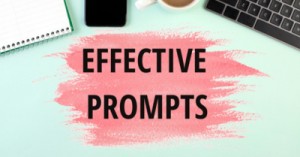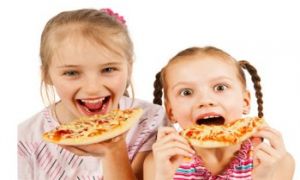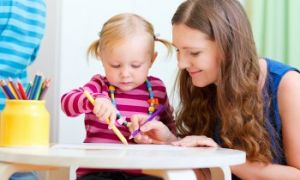Learning trajectories in early childhood refer to the developmental pathways that children typically follow as they acquire new skills and knowledge. The following article provides information on What Are Learning Trajectories In Early Childhood, Learning Trajectory Domains, How To Use Learning Trajectories In Early Childhood, Using Learning Trajectories In Play Based Activities, Learning Trajectories And The EYLF and more.
What Are Learning Trajectories In Early Childhood
Learning trajectories help educators understand how children progress in various domains and can guide curriculum planning and teaching strategies. Here are the key domains often covered by learning trajectories:
- Executive Functions: These include skills like working memory, cognitive flexibility, and inhibitory control, which are crucial for self-regulation and problem-solving.
- Social and Emotional Learning: This domain focuses on children’s ability to understand and manage emotions, establish positive relationships, and make responsible decisions.
- Mathematical Thinking: This involves the development of number sense, spatial awareness, and problem-solving skills related to mathematics.
- Language and Communication: This includes the development of vocabulary, grammar, listening skills, and the ability to express thoughts and ideas effectively.
- Physical Development: This covers both fine and gross motor skills, as well as overall physical health and coordination.
Using learning trajectories, educators can create more intentional and responsive learning experiences that support children’s holistic development. They also help in aligning teaching practices with frameworks like the Early Years Learning Framework (EYLF) and the National Quality Standard.
Learning Trajectory Domains
Learning trajectories in early childhood education cover several key domains that help educators understand and support children’s development. Here are the main domains typically included:
-
Executive Functions: These are cognitive processes that include working memory, cognitive flexibility, and inhibitory control. They are crucial for self-regulation, problem-solving, and goal-directed behavior1.
-
Social and Emotional Learning: This domain focuses on children’s ability to understand and manage emotions, establish positive relationships, and make responsible decisions. It includes skills like empathy, self-awareness, and social skills1.
-
Mathematical Thinking: This involves the development of number sense, spatial awareness, and problem-solving skills related to mathematics. Activities in this domain help children understand concepts like counting, patterns, and measurement1.
-
Language and Communication: This includes the development of vocabulary, grammar, listening skills, and the ability to express thoughts and ideas effectively. It also covers both verbal and non-verbal communication skills1.
-
Physical Development: This domain covers both fine and gross motor skills, as well as overall physical health and coordination. Activities that promote physical development include those that enhance balance, strength, and dexterity1.
These domains are interconnected, and development in one area often supports growth in others. By understanding and using learning trajectories, educators can create more intentional and responsive learning experiences that support children’s holistic development.
How To Use Learning Trajectories In Early Childhood
Using learning trajectories in early childhood education involves several key steps to ensure they effectively guide teaching and support children’s development. Here are some practical ways to implement them:
-
Understand the Trajectories: Familiarize yourself with the specific learning trajectories relevant to your curriculum. These trajectories outline the typical developmental pathways in various domains such as language, mathematics, social-emotional skills, and physical development.
-
Observe and Assess: Regularly observe children during play and routine activities. Use the indicators provided in the learning trajectories to assess where each child is in their developmental path. This helps in identifying their current skills and the next steps in their learning.
-
Plan Intentional Activities: Based on your observations, plan activities that target the next steps in the learning trajectories. For example, if a child is developing early counting skills, you might introduce games that involve counting objects or sorting items by number.
-
Differentiate Instruction: Recognize that children develop at different rates. Use the learning trajectories to differentiate your instruction, providing more support or challenge as needed. This ensures that each child is engaged and learning at their own pace.
-
Document Progress: Keep detailed records of each child’s progress along the learning trajectories. This documentation can include notes from observations, samples of children’s work, and photos of them engaged in activities. This helps in tracking development over time and sharing progress with families.
-
Engage Families: Share information about learning trajectories with families and involve them in their child’s learning process. Provide suggestions for activities they can do at home to support their child’s development.
-
Reflect and Adjust: Regularly reflect on your teaching practices and the effectiveness of the activities you plan. Use the insights gained from observing children’s progress to adjust your strategies and ensure they are meeting the needs of all learners.
-
Collaborate with Colleagues: Work with other educators to share insights and strategies for using learning trajectories. Collaboration can provide new ideas and support for implementing these pathways effectively.
By integrating learning trajectories into your daily practice, you can create a more structured and responsive learning environment that supports each child’s unique developmental journey.
Learning Trajectories And The EYLF
Learning trajectories and the Early Years Learning Framework (EYLF) are closely aligned, both aiming to support children’s holistic development through intentional and responsive teaching practices. Here’s how they connect and how you can use them together in your early childhood education setting:
Alignment with EYLF Principles and Practices
-
Holistic Approaches: Learning trajectories emphasize the interconnectedness of different developmental domains, much like the EYLF’s holistic approach to children’s learning and development.
-
Responsiveness to Children: Both frameworks stress the importance of being responsive to children’s individual needs and interests. Learning trajectories provide a roadmap for understanding where each child is in their development and what their next steps might be.
-
Learning Through Play: The EYLF highlights the significance of play-based learning. Learning trajectories can guide the planning of play activities that are developmentally appropriate and support specific learning goals.
-
Intentional Teaching: Learning trajectories help educators plan intentional teaching moments that align with the EYLF’s emphasis on purposeful and thoughtful interactions with children.
Using Learning Trajectories with the EYLF
-
Observation and Assessment: Use learning trajectories to observe and assess children’s progress. This aligns with the EYLF’s practice of ongoing assessment for learning, development, and wellbeing.
-
Planning and Documentation: Integrate learning trajectories into your planning cycle. Document children’s progress along these trajectories and use this information to plan future activities and experiences.
-
Differentiated Instruction: Tailor your teaching strategies to meet the diverse needs of children, as guided by the learning trajectories. This ensures that all children are supported in their individual learning journeys.
-
Reflective Practice: Regularly reflect on your teaching practices and the effectiveness of your activities. Use insights from the learning trajectories to make informed adjustments, ensuring that your approach remains responsive and effective.
-
Engaging Families: Share information about learning trajectories with families to involve them in their child’s learning process. Provide suggestions for activities they can do at home to support their child’s development.
By integrating learning trajectories with the EYLF, you can create a more structured and responsive learning environment that supports each child’s unique developmental journey.
Using learning trajectories in play-based activities is an effective way to support children’s development in a natural and engaging manner. Here are some practical strategies to integrate learning trajectories into your play-based curriculum:
1. Identify Developmental Goals
Start by identifying the developmental goals for each child based on the learning trajectories. For example, if a child is working on fine motor skills, you might focus on activities that involve manipulating small objects.
2. Plan Intentional Play Activities
Design play activities that align with these developmental goals. Here are a few examples:
- Mathematical Thinking: Set up a block area where children can build structures, encouraging them to count blocks, recognize shapes, and explore spatial relationships.
- Language Development: Create a dramatic play area with props related to a favorite story. Encourage children to act out the story, which helps them practice vocabulary and narrative skills.
- Social-Emotional Skills: Use cooperative games that require children to work together, take turns, and solve problems collectively.
3. Use Scaffolding Techniques
Provide support and guidance to help children achieve their developmental goals during play. This might include:
- Modeling: Demonstrate how to use new vocabulary or solve a problem.
- Prompting: Give hints or ask questions that guide children towards discovering solutions on their own.
- Encouraging: Offer positive reinforcement to build confidence and motivation.
4. Observe and Document
Regularly observe children during play to assess their progress along the learning trajectories. Document these observations to track development and plan future activities. This can include taking notes, photos, or videos of children engaged in play.
5. Reflect and Adjust
Reflect on the effectiveness of your play-based activities and make adjustments as needed. Use your observations to inform your planning and ensure that activities continue to meet the developmental needs of each child.
6. Engage Families
Share information about the learning trajectories and play-based activities with families. Provide suggestions for play activities they can do at home to support their child’s development.
By integrating learning trajectories into play-based activities, you can create a rich, engaging learning environment that supports children’s holistic development.
Practical Strategies For Learning Trajectories
Here are some practical strategies for promoting development across the key learning trajectory domains in early childhood:
1. Executive Functions
Strategies:
- Memory Games: Play games like “Simon Says” or matching card games to enhance working memory.
- Flexible Thinking Activities: Encourage activities that require children to think creatively, such as building with blocks or solving puzzles.
- Self-Regulation Techniques: Teach children breathing exercises or mindfulness practices to help them manage their emotions and behaviors.
2. Social and Emotional Learning
Strategies:
- Emotion Recognition: Use picture books and stories to discuss different emotions and how to recognize them.
- Role-Playing: Set up scenarios where children can practice social interactions, such as sharing or resolving conflicts.
- Positive Reinforcement: Praise and reward positive social behaviors to encourage repetition.
3. Mathematical Thinking
Strategies:
- Counting Games: Incorporate counting into daily activities, such as counting steps or toys.
- Shape and Pattern Recognition: Use shape sorters, pattern blocks, and puzzles to help children recognize and create patterns.
- Measurement Activities: Engage children in activities that involve measuring, such as cooking or comparing the lengths of objects.
4. Language and Communication
Strategies:
- Storytelling: Encourage children to tell their own stories using puppets or drawings.
- Interactive Reading: Ask questions and discuss the story while reading books together.
- Vocabulary Building: Introduce new words during play and daily routines and use them in context to help children understand their meanings.
5. Physical Development
Strategies:
- Fine Motor Skills: Provide activities like threading beads, cutting with scissors, and drawing to develop fine motor skills.
- Gross Motor Skills: Encourage outdoor play that involves running, jumping, and climbing.
- Coordination Activities: Set up obstacle courses or play games that require coordination, such as catching and throwing balls.
By incorporating these strategies into your daily routines and play-based activities, you can support children’s development across all key domains.
Linking Learning Trajectories To The EYLF Outcomes
Linking learning trajectories to the Early Years Learning Framework (EYLF) outcomes can enhance your curriculum planning and support children’s holistic development. Here’s how you can align learning trajectories with the EYLF outcomes:
EYLF Outcomes and Learning Trajectories
-
Outcome 1: Children Have a Strong Sense of Identity
- Learning Trajectories: Focus on social and emotional learning trajectories. Plan activities that help children understand and manage their emotions, build positive relationships, and develop self-awareness.
- Example Activity: Role-playing scenarios where children practice sharing and taking turns, which fosters empathy and social skills.
-
Outcome 2: Children Are Connected with and Contribute to Their World
- Learning Trajectories: Use trajectories that emphasize social interactions and community involvement. Encourage activities that connect children with their peers and the broader community.
- Example Activity: Organize group projects where children work together to create a community garden, promoting teamwork and a sense of belonging.
-
Outcome 3: Children Have a Strong Sense of Wellbeing
- Learning Trajectories: Integrate physical development trajectories. Plan activities that promote physical health, coordination, and motor skills.
- Example Activity: Set up obstacle courses that challenge children’s gross motor skills, such as running, jumping, and balancing.
-
Outcome 4: Children Are Confident and Involved Learners
- Learning Trajectories: Focus on executive functions and cognitive development. Provide opportunities for problem-solving, critical thinking, and exploration.
- Example Activity: Introduce puzzles and building blocks that require children to plan, experiment, and solve problems.
-
Outcome 5: Children Are Effective Communicators
- Learning Trajectories: Emphasize language and communication trajectories. Engage children in activities that enhance their vocabulary, listening skills, and expressive language.
- Example Activity: Conduct daily read-aloud sessions followed by discussions and storytelling activities to boost language development.
Practical Steps to Link Learning Trajectories with EYLF
-
Observation and Assessment: Use learning trajectories to observe and assess children’s progress. Document these observations to understand where each child is in their development and what their next steps should be2.
-
Intentional Planning: Plan activities that align with both the learning trajectories and EYLF outcomes. Ensure that these activities are developmentally appropriate and cater to the individual needs of each child2.
-
Reflective Practice: Regularly reflect on your teaching practices and the effectiveness of your activities. Use insights from the learning trajectories to make informed adjustments and improve your approach2.
-
Engage Families: Share information about learning trajectories and EYLF outcomes with families. Provide suggestions for activities they can do at home to support their child’s development2.
By integrating learning trajectories with the EYLF outcomes, you can create a more structured and responsive learning environment that supports each child’s unique developmental journey.
Linking Learning Trajectories To EYLF Outcome 1
Linking learning trajectories to EYLF Outcome 1, which focuses on children developing a strong sense of identity, involves creating intentional and responsive learning experiences that support children’s self-awareness, confidence, and social-emotional skills. Here are some strategies to effectively link learning trajectories to this outcome:
EYLF Outcome 1: Children Have a Strong Sense of Identity
Key Learning Goals:
-
Children feel safe, secure, and supported:
- Learning Trajectories: Focus on social and emotional learning trajectories. Plan activities that help children build secure attachments, understand their emotions, and develop trust in their relationships.
- Example Activity: Create a “feelings corner” with books, puppets, and mirrors where children can explore and express their emotions. Use stories and role-playing to discuss different feelings and appropriate ways to express them.
-
Children develop their emerging autonomy, interdependence, resilience, and sense of agency:
- Learning Trajectories: Emphasize executive functions and social-emotional learning. Encourage activities that promote decision-making, problem-solving, and collaboration.
- Example Activity: Set up a “choice board” with various activities and allow children to choose what they want to do. This promotes independence and decision-making skills.
-
Children develop knowledgeable and confident self-identities and a positive sense of worth:
- Learning Trajectories: Use language and communication trajectories to help children articulate their thoughts and feelings, and recognize their strengths.
- Example Activity: Encourage children to create “All About Me” books where they can draw pictures and write about their likes, dislikes, family, and friends. This helps them reflect on their identity and share it with others.
-
Children learn to interact in relation to others with care, empathy, and respect:
- Learning Trajectories: Focus on social and emotional learning trajectories. Plan activities that foster empathy, cooperation, and respectful interactions.
- Example Activity: Organize group activities like building a community project or playing cooperative games. These activities require children to work together, share ideas, and support each other.
Practical Steps to Link Learning Trajectories with EYLF Outcome 1
-
Observation and Assessment: Use learning trajectories to observe and assess children’s progress in developing a strong sense of identity. Document these observations to understand where each child is in their development and what their next steps should be.
-
Intentional Planning: Plan activities that align with both the learning trajectories and EYLF Outcome 1. Ensure that these activities are developmentally appropriate and cater to the individual needs of each child.
-
Reflective Practice: Regularly reflect on your teaching practices and the effectiveness of your activities. Use insights from the learning trajectories to make informed adjustments and improve your approach.
-
Engage Families: Share information about learning trajectories and EYLF Outcome 1 with families. Provide suggestions for activities they can do at home to support their child’s development.
By integrating learning trajectories with EYLF Outcome 1, you can create a more structured and responsive learning environment that supports each child’s unique developmental journey.
Linking learning trajectories to EYLF Outcome 2, which focuses on children being connected with and contributing to their world, involves creating learning experiences that foster a sense of community, respect for diversity, and active participation. Here are some strategies to effectively link learning trajectories to this outcome:
EYLF Outcome 2: Children Are Connected with and Contribute to Their World
Key Learning Goals:
-
Children develop a sense of belonging to groups and communities and an understanding of the reciprocal rights and responsibilities necessary for active community participation:
- Learning Trajectories: Focus on social and emotional learning trajectories. Plan activities that help children understand their roles within a community and develop cooperative skills.
- Example Activity: Organize group projects such as creating a community mural or garden. These activities encourage children to work together, share responsibilities, and understand the importance of contributing to their community.
-
Children respond to diversity with respect:
- Learning Trajectories: Emphasize social and emotional learning and language and communication trajectories. Encourage activities that expose children to diverse cultures and perspectives.
- Example Activity: Celebrate cultural diversity by having children share stories, foods, and traditions from their own backgrounds. Use books and resources that reflect a variety of cultures and languages.
-
Children become aware of fairness:
- Learning Trajectories: Use social and emotional learning trajectories to help children understand concepts of fairness and justice.
- Example Activity: Read stories and discuss scenarios that involve fairness and unfairness. Encourage children to express their thoughts and feelings about these situations and brainstorm fair solutions together.
-
Children become socially responsible and show respect for the environment:
- Learning Trajectories: Integrate physical development and social and emotional learning trajectories. Plan activities that involve caring for the environment and understanding sustainability.
- Example Activity: Engage children in recycling projects, nature walks, and gardening. Discuss the importance of taking care of the environment and how their actions can make a difference.
Practical Steps to Link Learning Trajectories with EYLF Outcome 2
-
Observation and Assessment: Use learning trajectories to observe and assess children’s progress in developing a sense of connection and contribution. Document these observations to understand where each child is in their development and what their next steps should be2.
-
Intentional Planning: Plan activities that align with both the learning trajectories and EYLF Outcome 2. Ensure that these activities are developmentally appropriate and cater to the individual needs of each child.
-
Reflective Practice: Regularly reflect on your teaching practices and the effectiveness of your activities. Use insights from the learning trajectories to make informed adjustments and improve your approach.
-
Engage Families: Share information about learning trajectories and EYLF Outcome 2 with families. Provide suggestions for activities they can do at home to support their child’s development.
By integrating learning trajectories with EYLF Outcome 2, you can create a more structured and responsive learning environment that supports each child’s unique developmental journey.
Linking learning trajectories to EYLF Outcome 3, which focuses on children having a strong sense of wellbeing, involves creating learning experiences that promote physical, social, and emotional health. Here are some strategies to effectively link learning trajectories to this outcome:
EYLF Outcome 3: Children Have a Strong Sense of Wellbeing
Key Learning Goals:
-
Children become strong in their social, emotional, and mental wellbeing:
- Learning Trajectories: Focus on social and emotional learning trajectories. Plan activities that help children understand and manage their emotions, build resilience, and develop positive relationships.
- Example Activity: Create a “calm corner” with sensory toys, books about emotions, and calming music. Encourage children to use this space when they need to regulate their emotions.
-
Children take increasing responsibility for their own health and physical wellbeing:
- Learning Trajectories: Emphasize physical development trajectories. Plan activities that promote healthy habits, physical fitness, and self-care skills.
- Example Activity: Organize daily physical activities such as obstacle courses, yoga sessions, or nature walks. Discuss the importance of exercise, healthy eating, and hygiene.
-
Children become strong in their social and emotional wellbeing:
- Learning Trajectories: Use social and emotional learning trajectories to help children develop self-regulation, empathy, and social skills.
- Example Activity: Implement group activities that require cooperation and teamwork, such as building a group project or playing cooperative games. These activities help children practice social skills and build relationships.
Practical Steps to Link Learning Trajectories with EYLF Outcome 3
-
Observation and Assessment: Use learning trajectories to observe and assess children’s progress in developing a strong sense of wellbeing. Document these observations to understand where each child is in their development and what their next steps should be.
-
Intentional Planning: Plan activities that align with both the learning trajectories and EYLF Outcome 3. Ensure that these activities are developmentally appropriate and cater to the individual needs of each child.
-
Reflective Practice: Regularly reflect on your teaching practices and the effectiveness of your activities. Use insights from the learning trajectories to make informed adjustments and improve your approach.
-
Engage Families: Share information about learning trajectories and EYLF Outcome 3 with families. Provide suggestions for activities they can do at home to support their child’s development.
By integrating learning trajectories with EYLF Outcome 3, you can create a more structured and responsive learning environment that supports each child’s unique developmental journey.
Linking learning trajectories to EYLF Outcome 4, which focuses on children being confident and involved learners, involves creating learning experiences that foster curiosity, creativity, problem-solving, and active engagement. Here are some strategies to effectively link learning trajectories to this outcome:
EYLF Outcome 4: Children Are Confident and Involved Learners
Key Learning Goals:
-
Children develop dispositions for learning such as curiosity, cooperation, confidence, creativity, commitment, enthusiasm, persistence, imagination, and reflexivity:
- Learning Trajectories: Focus on executive functions and social-emotional learning trajectories. Plan activities that encourage exploration, experimentation, and collaboration.
- Example Activity: Set up a science exploration table with various materials (e.g., magnifying glasses, leaves, rocks) and encourage children to investigate and ask questions. This fosters curiosity and scientific thinking.
-
Children develop a range of skills and processes such as problem-solving, inquiry, experimentation, hypothesizing, researching, and investigating:
- Learning Trajectories: Emphasize mathematical thinking and language and communication trajectories. Provide opportunities for children to engage in hands-on, inquiry-based learning.
- Example Activity: Create a “construction zone” with building blocks and tools where children can design and build structures. Encourage them to hypothesize and test their ideas, promoting problem-solving and critical thinking.
-
Children transfer and adapt what they have learned from one context to another:
- Learning Trajectories: Use executive functions and physical development trajectories to help children apply their skills in various settings.
- Example Activity: Organize a nature scavenger hunt where children use maps and clues to find items. This activity helps them apply their navigation and problem-solving skills in a new context.
-
Children resource their own learning through connecting with people, place, technologies, and natural and processed materials:
- Learning Trajectories: Integrate physical development and social-emotional learning trajectories. Plan activities that encourage children to use a variety of resources to support their learning.
- Example Activity: Set up a “makerspace” with recycled materials, art supplies, and technology tools. Encourage children to create projects based on their interests, fostering creativity and resourcefulness.
Practical Steps to Link Learning Trajectories with EYLF Outcome 4
-
Observation and Assessment: Use learning trajectories to observe and assess children’s progress in becoming confident and involved learners. Document these observations to understand where each child is in their development and what their next steps should be.
-
Intentional Planning: Plan activities that align with both the learning trajectories and EYLF Outcome 4. Ensure that these activities are developmentally appropriate and cater to the individual needs of each child.
-
Reflective Practice: Regularly reflect on your teaching practices and the effectiveness of your activities. Use insights from the learning trajectories to make informed adjustments and improve your approach.
-
Engage Families: Share information about learning trajectories and EYLF Outcome 4 with families. Provide suggestions for activities they can do at home to support their child’s development.
By integrating learning trajectories with EYLF Outcome 4, you can create a more structured and responsive learning environment that supports each child’s unique developmental journey
Linking learning trajectories to EYLF Outcome 5, which focuses on children being effective communicators, involves creating learning experiences that enhance language, literacy, and communication skills. Here are some strategies to effectively link learning trajectories to this outcome:
EYLF Outcome 5: Children Are Effective Communicators
Key Learning Goals:
-
Children interact verbally and non-verbally with others for a range of purposes:
- Learning Trajectories: Focus on language and communication trajectories. Plan activities that encourage both verbal and non-verbal communication.
- Example Activity: Use puppets and role-playing to create scenarios where children can practice conversations, express their ideas, and use body language to communicate.
-
Children engage with a range of texts and gain meaning from these texts:
- Learning Trajectories: Emphasize language and literacy development. Provide access to a variety of books, stories, and written materials.
- Example Activity: Set up a cozy reading corner with a diverse selection of books. Encourage children to explore these texts independently and during group story time.
-
Children express ideas and make meaning using a range of media:
- Learning Trajectories: Integrate language and communication trajectories with creative arts. Plan activities that allow children to express themselves through different media.
- Example Activity: Provide art supplies, musical instruments, and digital tools for children to create stories, songs, and artworks. This helps them convey their ideas in various forms.
-
Children begin to understand how symbols and pattern systems work:
- Learning Trajectories: Use mathematical thinking and language trajectories to introduce concepts of symbols and patterns.
- Example Activity: Engage children in activities like sorting objects by shape and color, recognizing letters and numbers, and creating patterns with beads or blocks.
-
Children use information and communication technologies to access information, investigate ideas, and represent their thinking:
- Learning Trajectories: Incorporate technology into language and communication learning. Plan activities that involve using digital tools for learning and expression.
- Example Activity: Introduce age-appropriate educational apps and interactive whiteboards where children can draw, write, and explore new concepts.
Practical Steps to Link Learning Trajectories with EYLF Outcome 5
-
Observation and Assessment: Use learning trajectories to observe and assess children’s progress in becoming effective communicators. Document these observations to understand where each child is in their development and what their next steps should be.
-
Intentional Planning: Plan activities that align with both the learning trajectories and EYLF Outcome 5. Ensure that these activities are developmentally appropriate and cater to the individual needs of each child.
-
Reflective Practice: Regularly reflect on your teaching practices and the effectiveness of your activities. Use insights from the learning trajectories to make informed adjustments and improve your approach.
-
Engage Families: Share information about learning trajectories and EYLF Outcome 5 with families. Provide suggestions for activities they can do at home to support their child’s development.
By integrating learning trajectories with EYLF Outcome 5, you can create a more structured and responsive learning environment that supports each child’s unique developmental journey.
Learning trajectories provide a structured framework for observing children’s development. They help educators identify specific skills and behaviors to look for, making observations more focused and meaningful.
Further Reading
EYLF Learning Outcomes Version 2.0
Free EYLF Version 2.0 Posters and Cheat Sheets
References:
Early Childhood Learning Trajectories, ACECQA
Differences Between Learning Trajectories and Milestones, ACECQA
Understanding Early Childhood Learning Trajectories, Education Research







 Here is the list of the EYLF Learning Outcomes that you can use as a guide or reference for your documentation and planning. The EYLF
Here is the list of the EYLF Learning Outcomes that you can use as a guide or reference for your documentation and planning. The EYLF The EYLF is a guide which consists of Principles, Practices and 5 main Learning Outcomes along with each of their sub outcomes, based on identity,
The EYLF is a guide which consists of Principles, Practices and 5 main Learning Outcomes along with each of their sub outcomes, based on identity, This is a guide on How to Write a Learning Story. It provides information on What Is A Learning Story, Writing A Learning Story, Sample
This is a guide on How to Write a Learning Story. It provides information on What Is A Learning Story, Writing A Learning Story, Sample One of the most important types of documentation methods that educators needs to be familiar with are “observations”. Observations are crucial for all early childhood
One of the most important types of documentation methods that educators needs to be familiar with are “observations”. Observations are crucial for all early childhood To support children achieve learning outcomes from the EYLF Framework, the following list gives educators examples of how to promote children's learning in each individual
To support children achieve learning outcomes from the EYLF Framework, the following list gives educators examples of how to promote children's learning in each individual Reflective practice is learning from everyday situations and issues and concerns that arise which form part of our daily routine while working in an early
Reflective practice is learning from everyday situations and issues and concerns that arise which form part of our daily routine while working in an early Within Australia, Programming and Planning is reflected and supported by the Early Years Learning Framework. Educators within early childhood settings, use the EYLF to guide
Within Australia, Programming and Planning is reflected and supported by the Early Years Learning Framework. Educators within early childhood settings, use the EYLF to guide When observing children, it's important that we use a range of different observation methods from running records, learning stories to photographs and work samples. Using
When observing children, it's important that we use a range of different observation methods from running records, learning stories to photographs and work samples. Using This is a guide for educators on what to observe under each sub learning outcome from the EYLF Framework, when a child is engaged in
This is a guide for educators on what to observe under each sub learning outcome from the EYLF Framework, when a child is engaged in The Early Years Learning Framework describes the curriculum as “all the interactions, experiences, activities, routines and events, planned and unplanned, that occur in an environment
The Early Years Learning Framework describes the curriculum as “all the interactions, experiences, activities, routines and events, planned and unplanned, that occur in an environment


